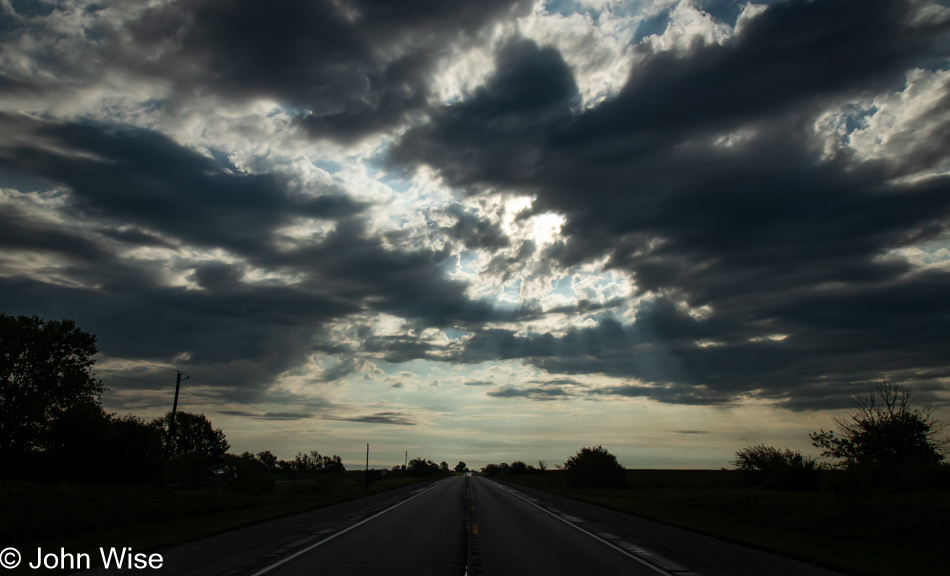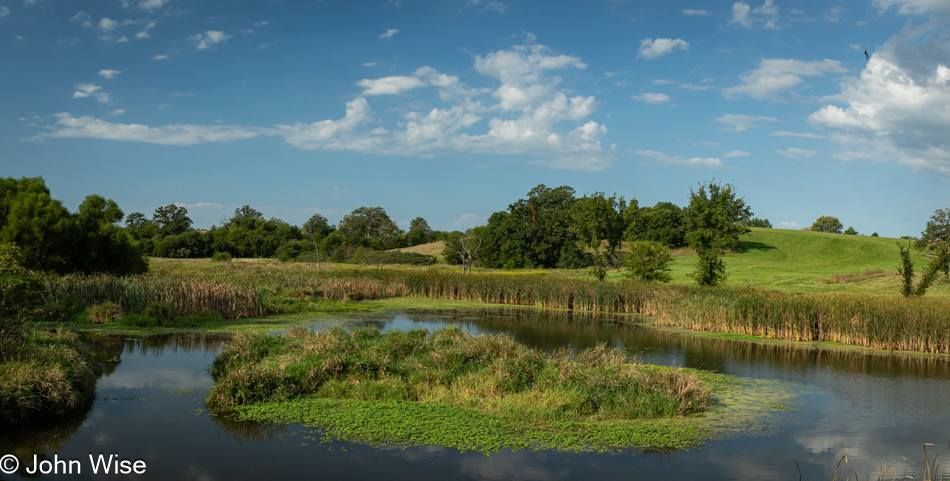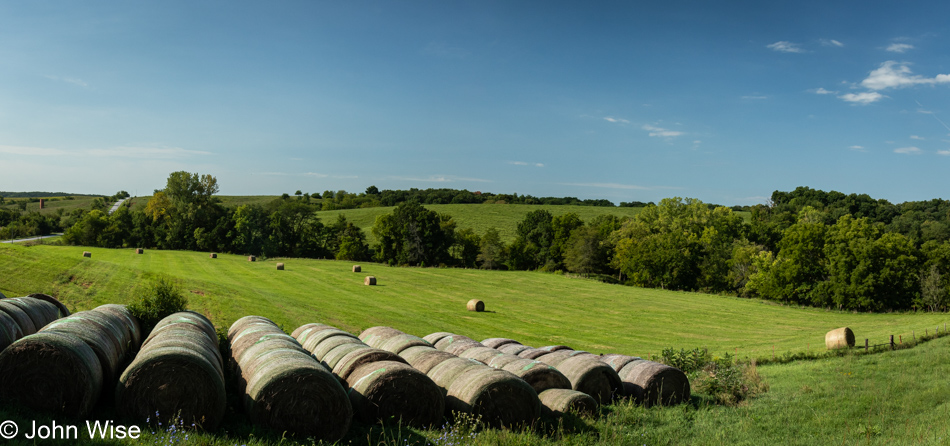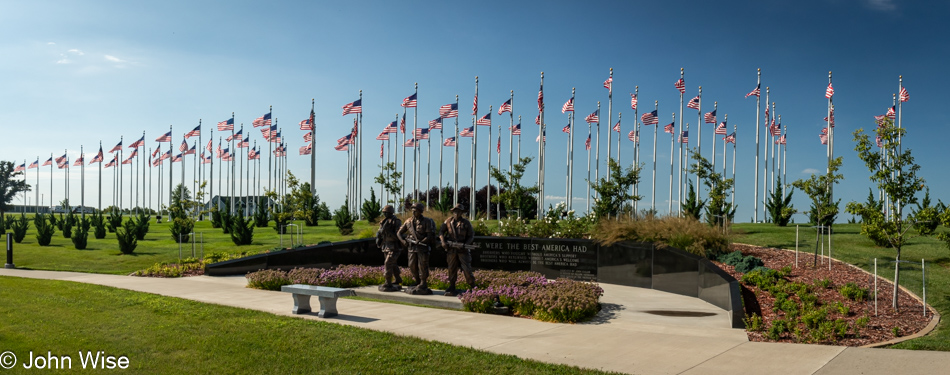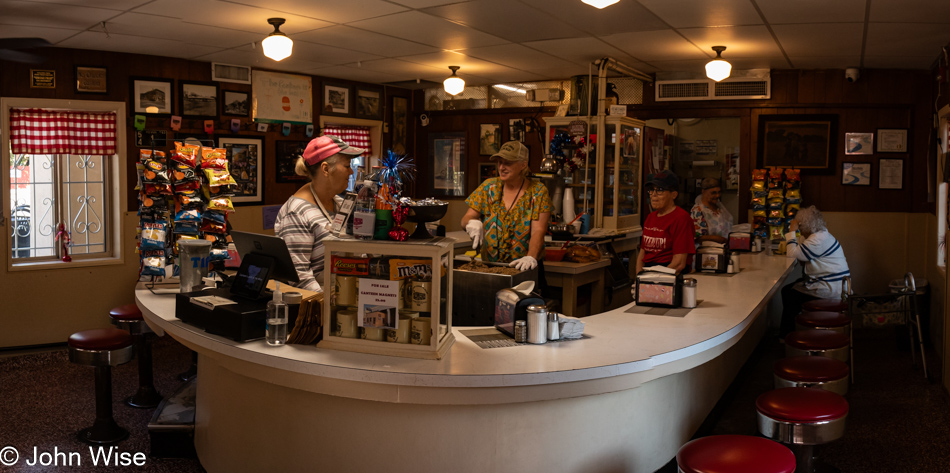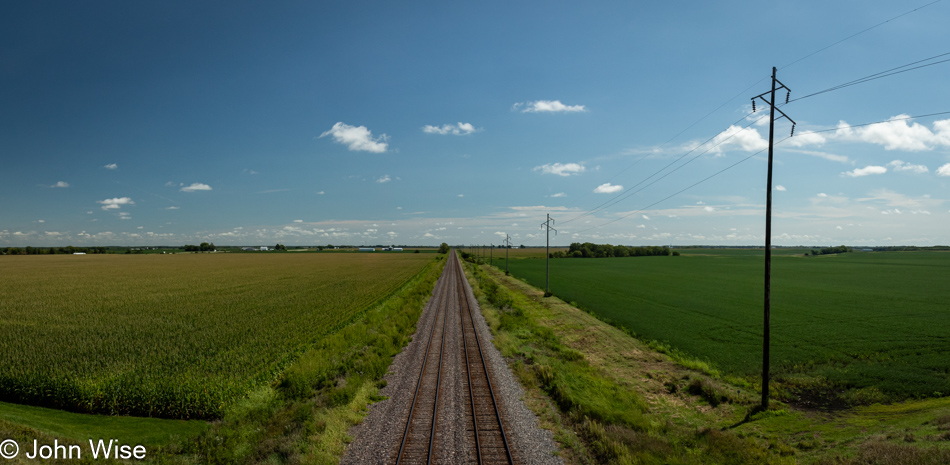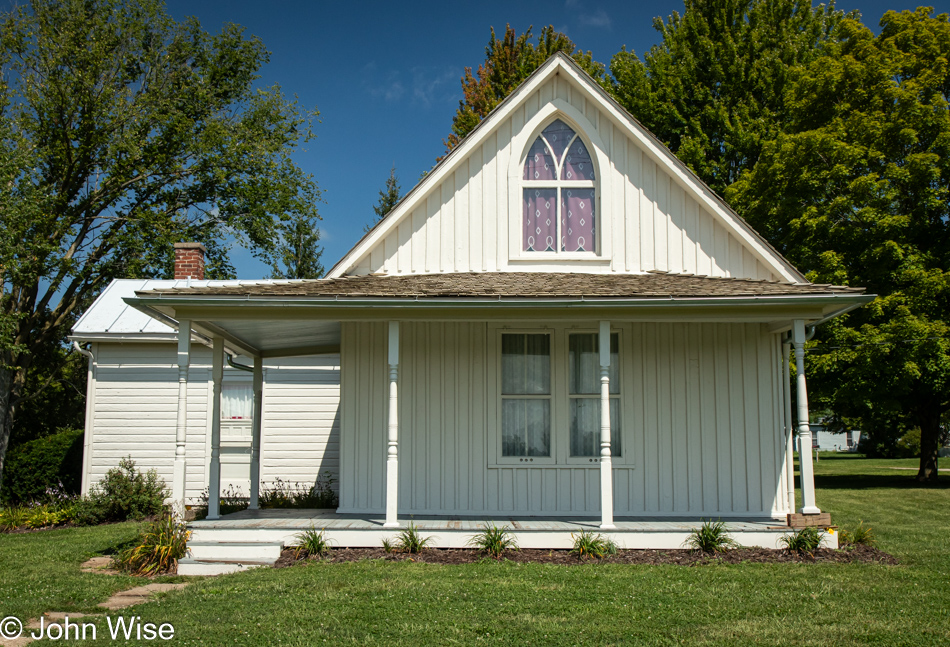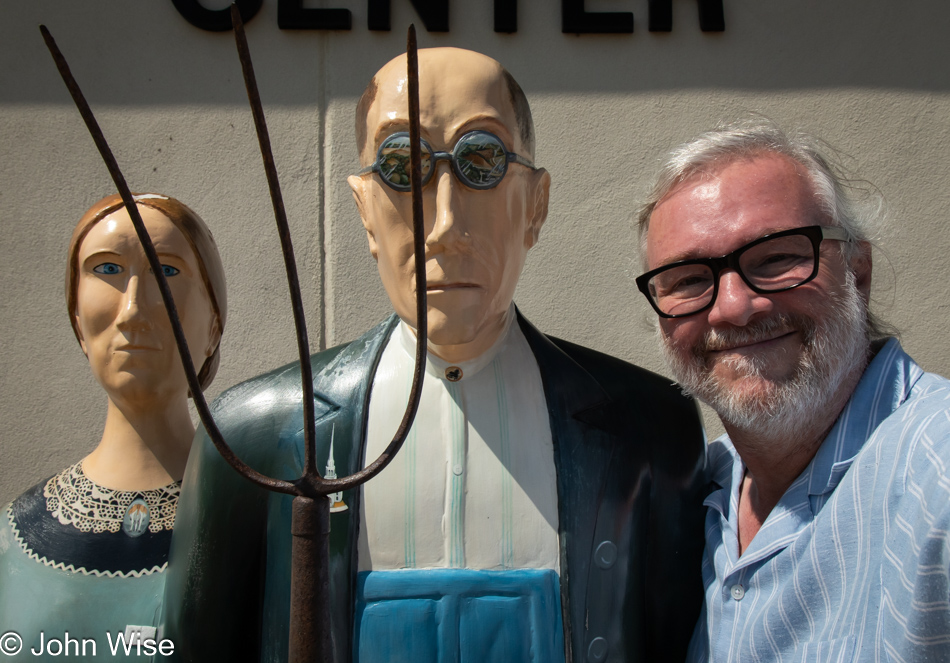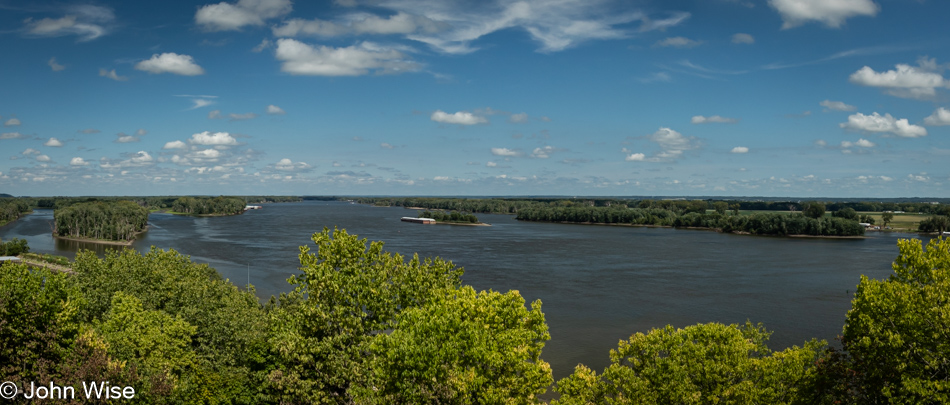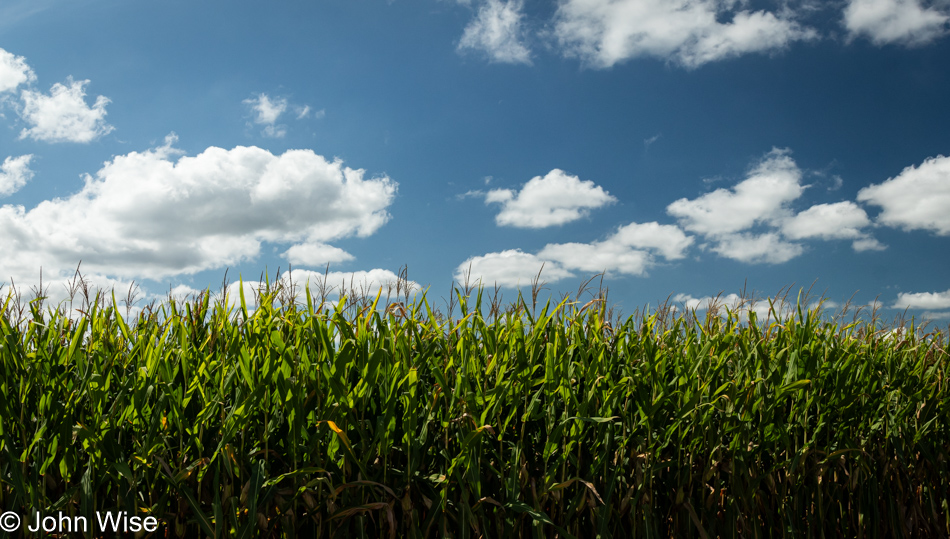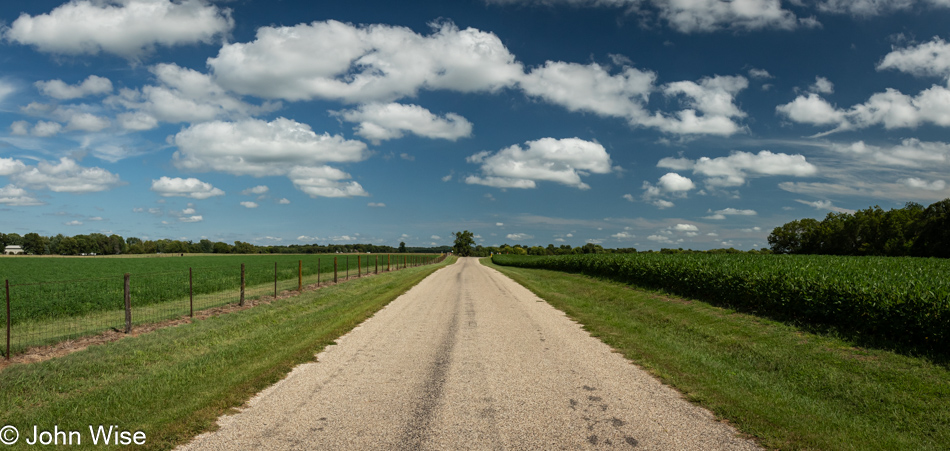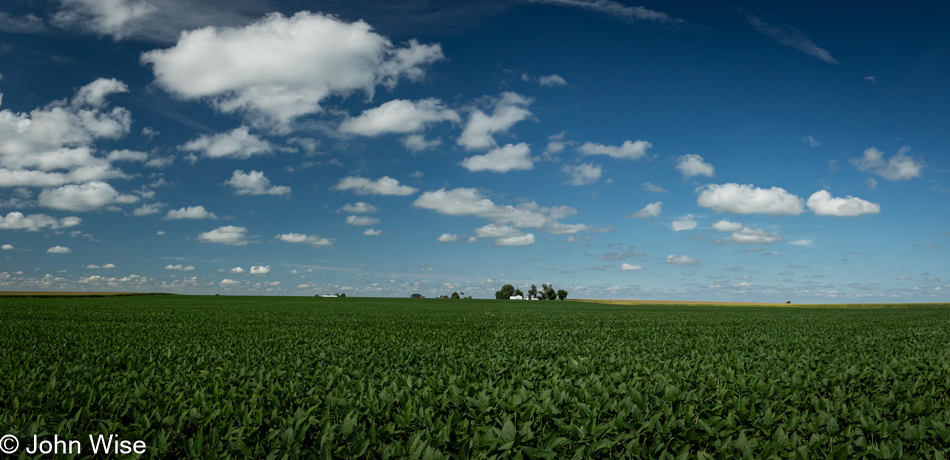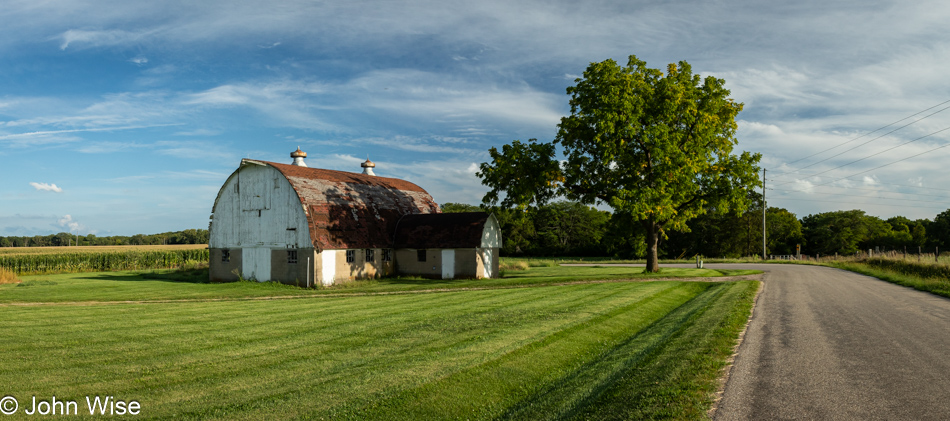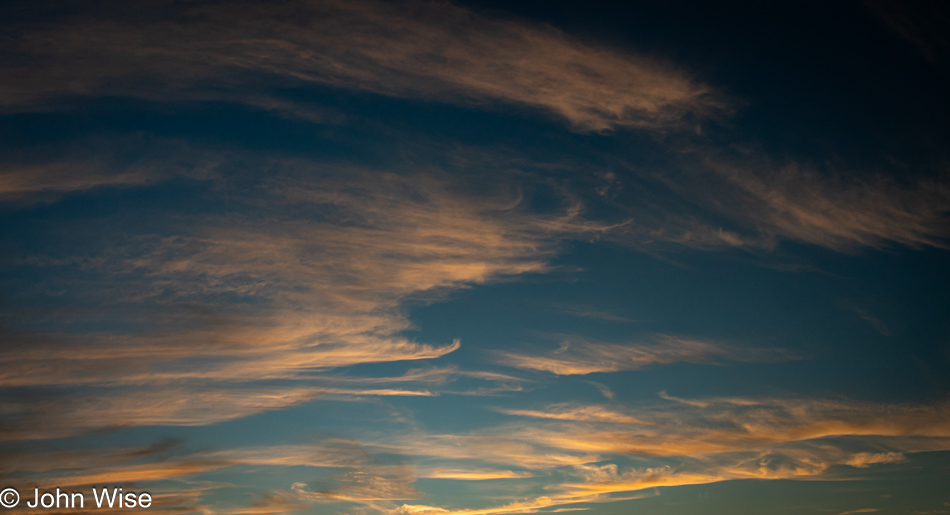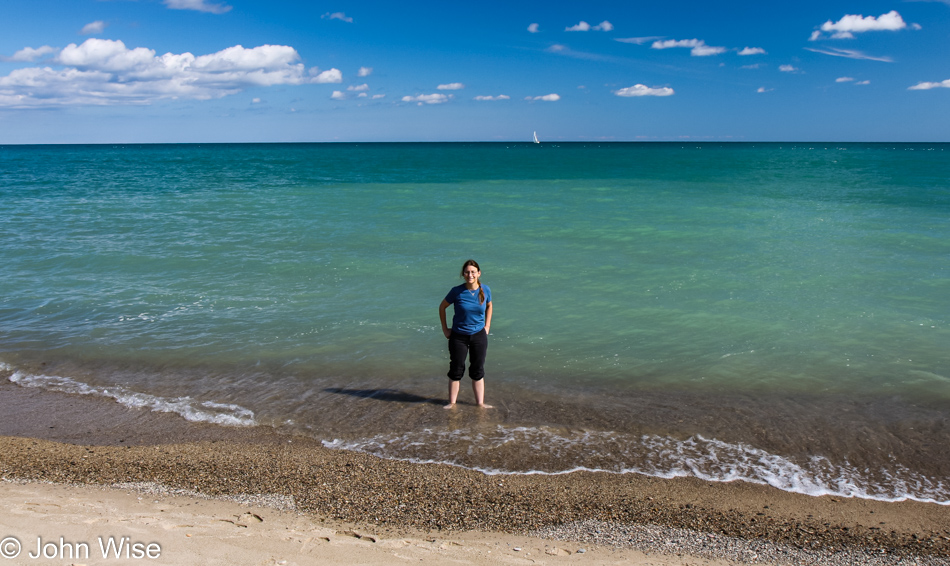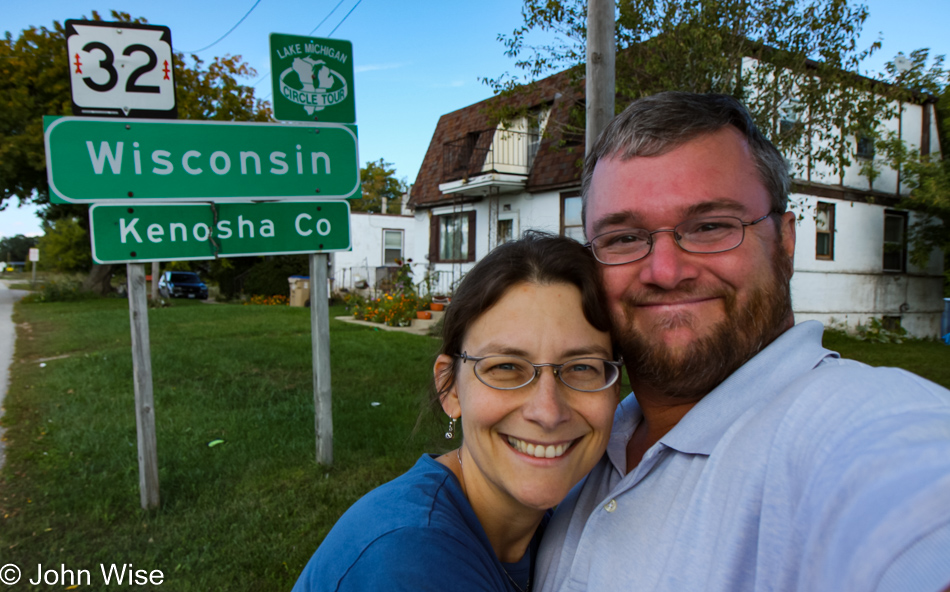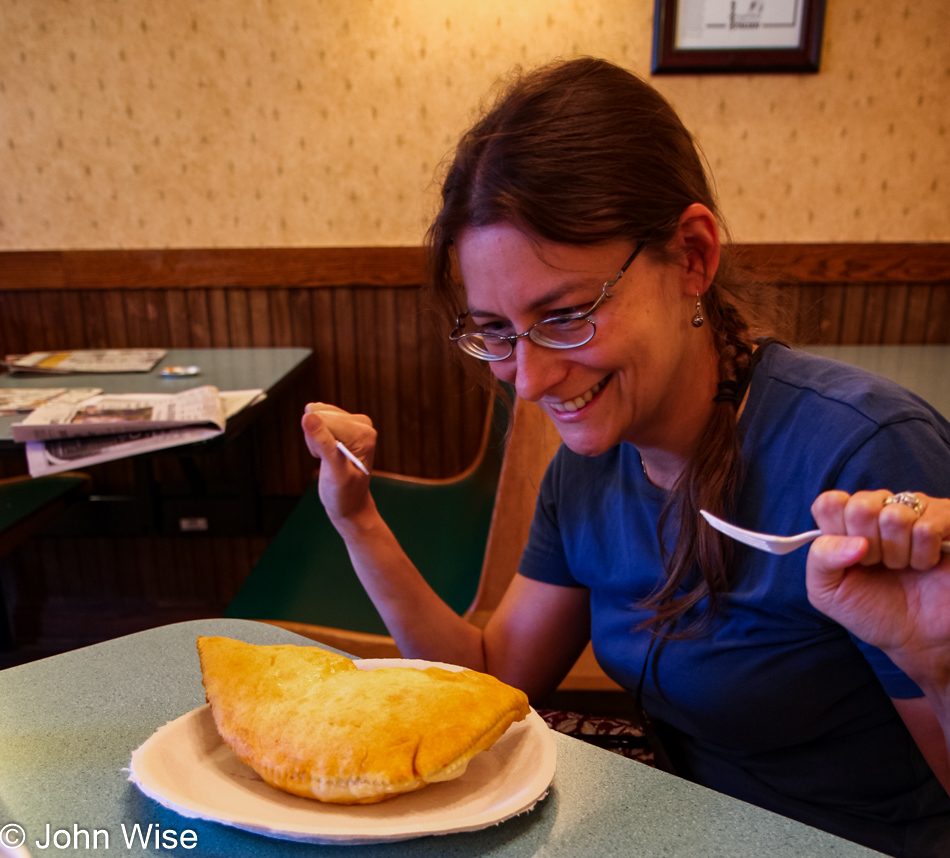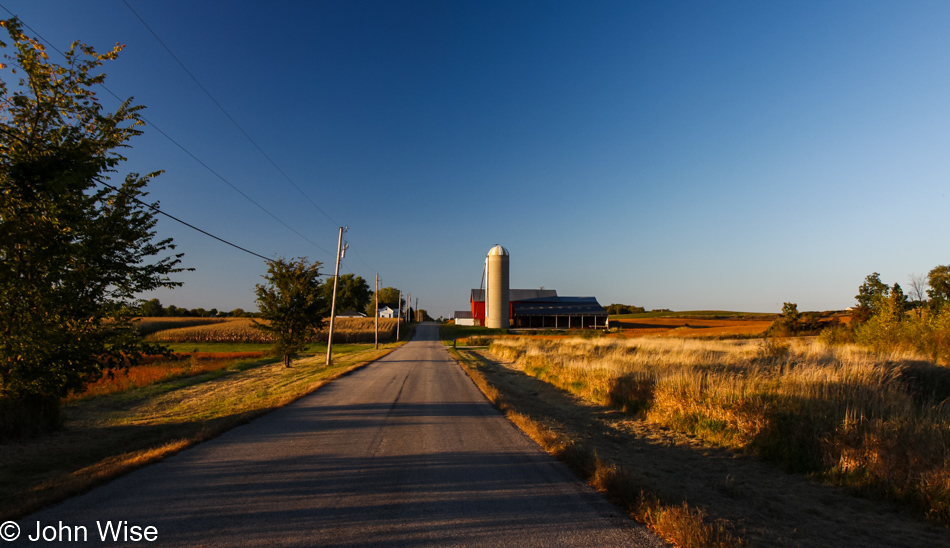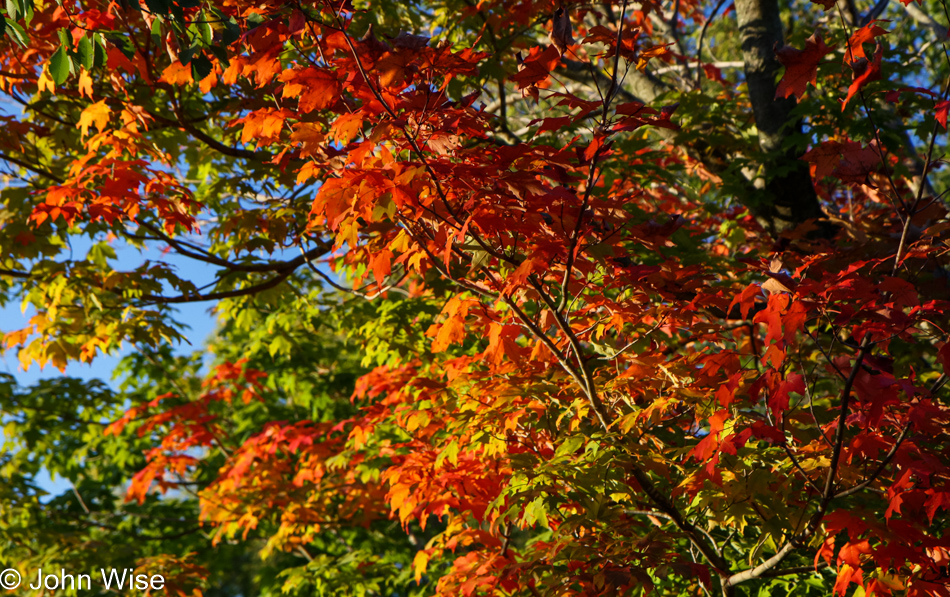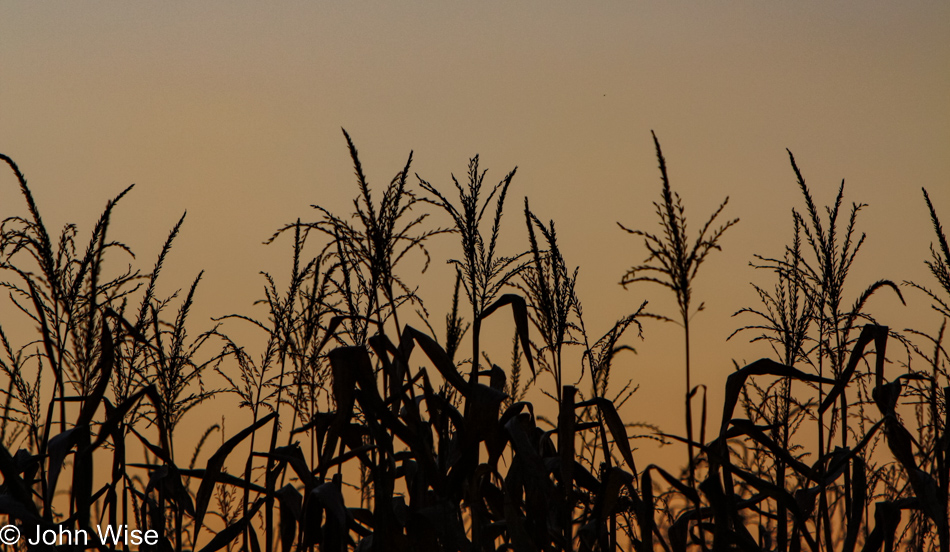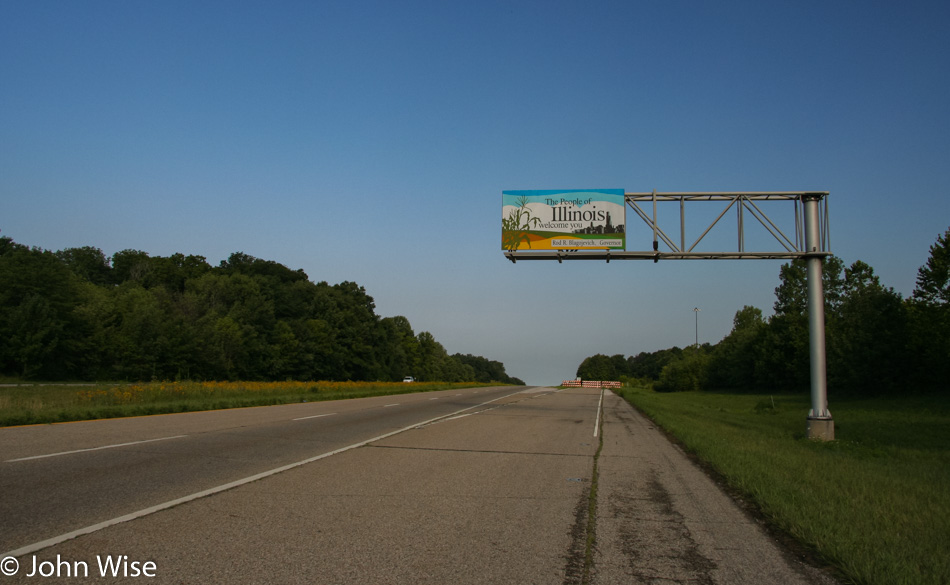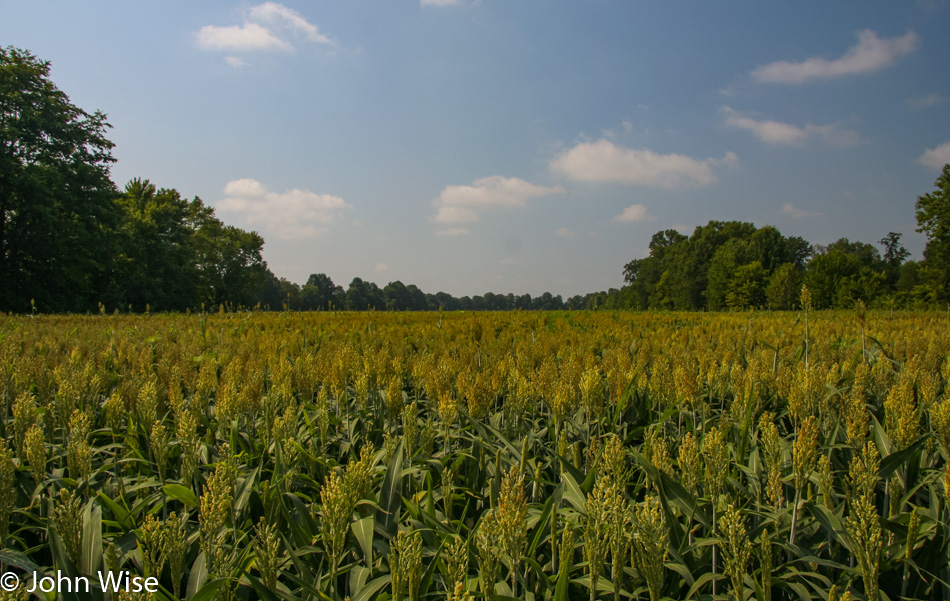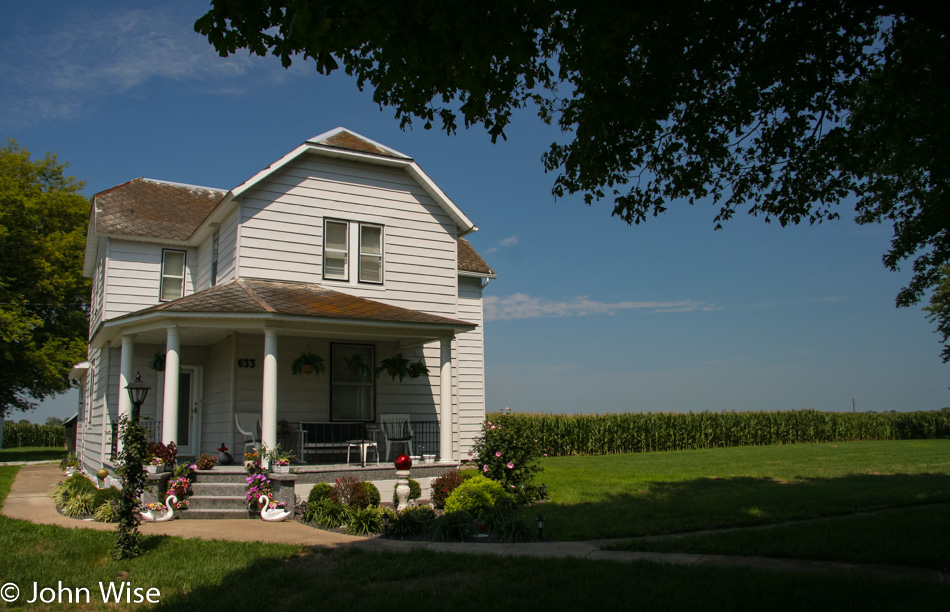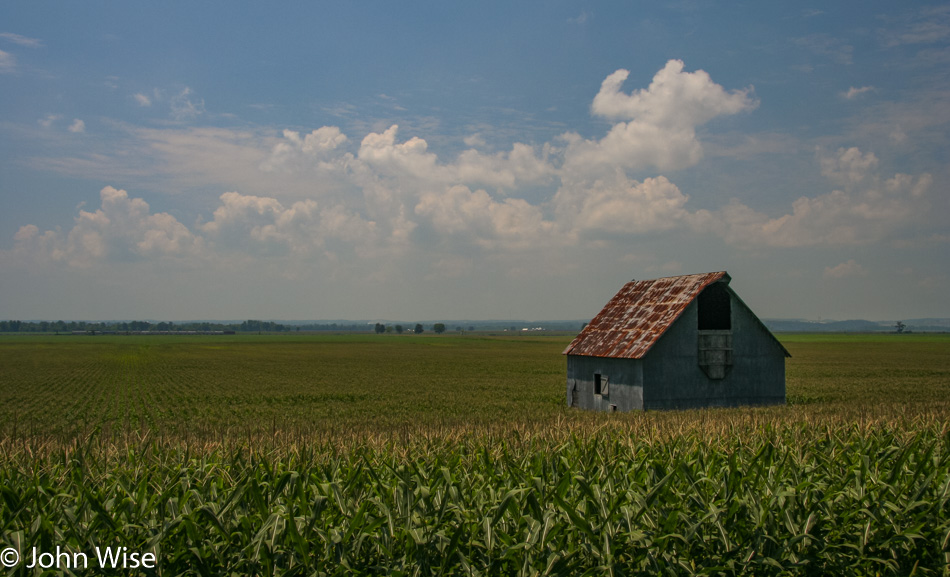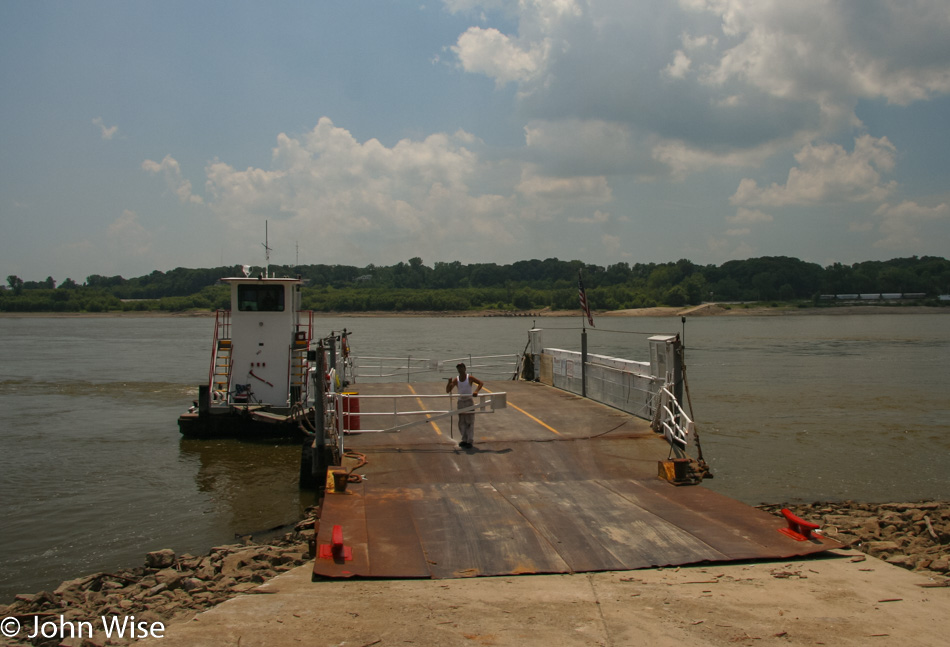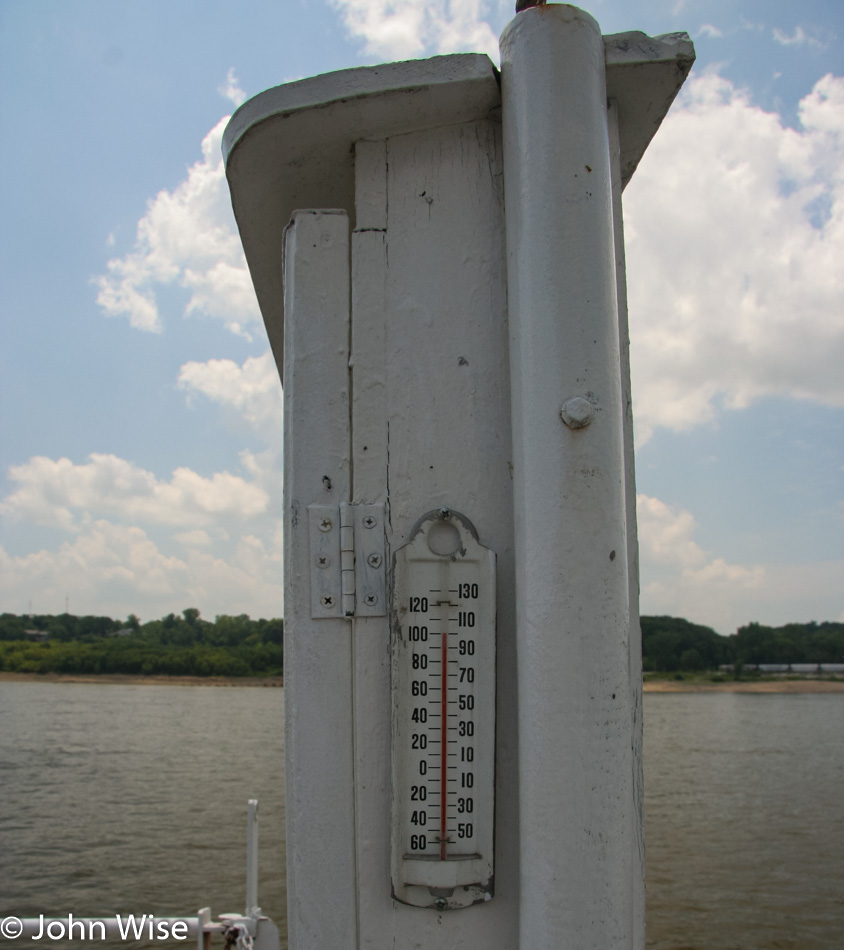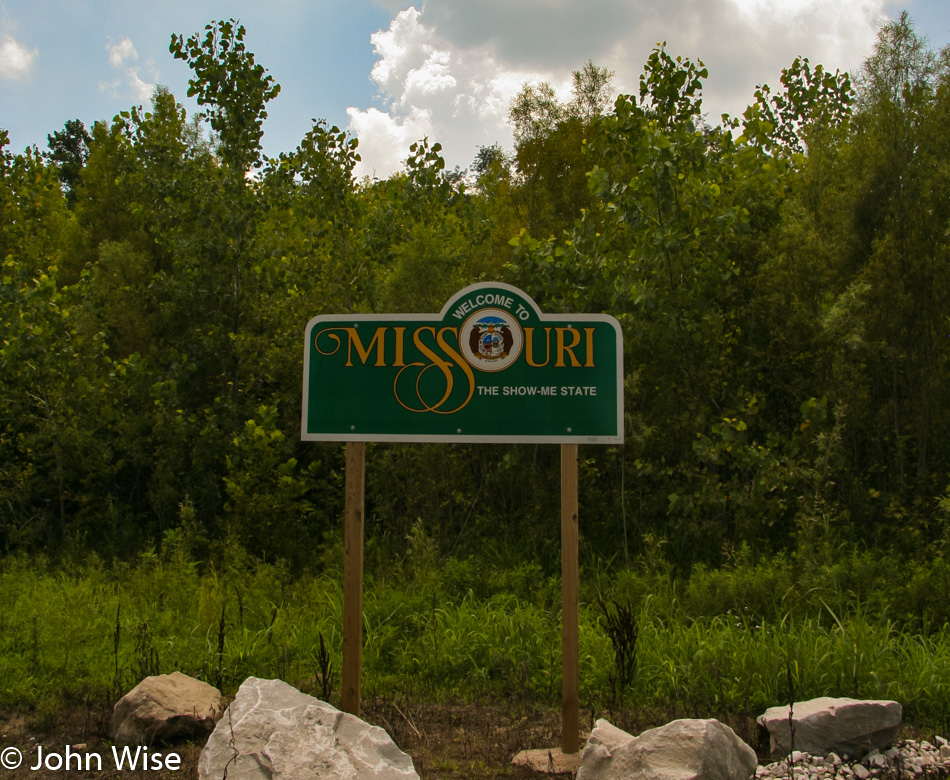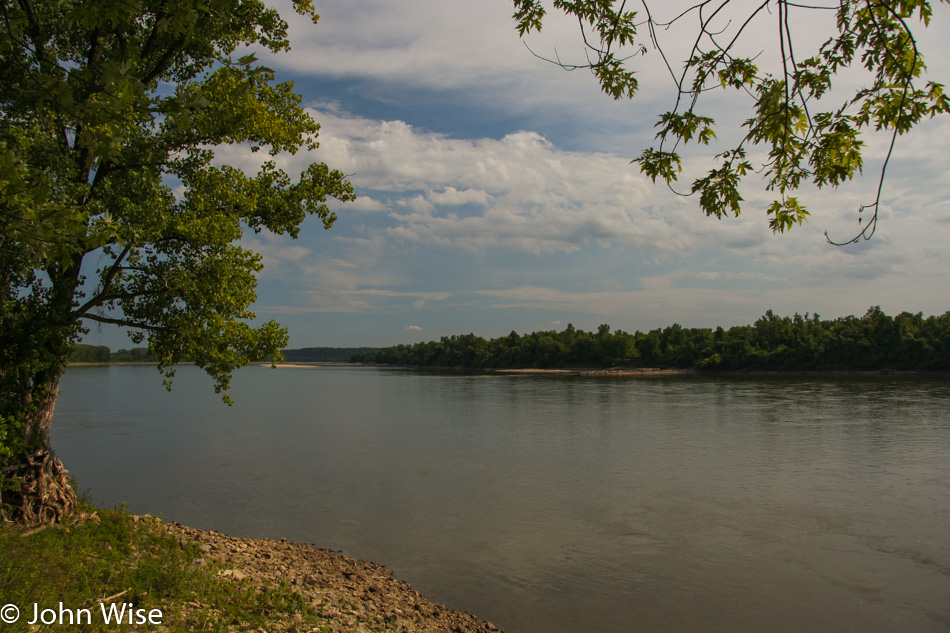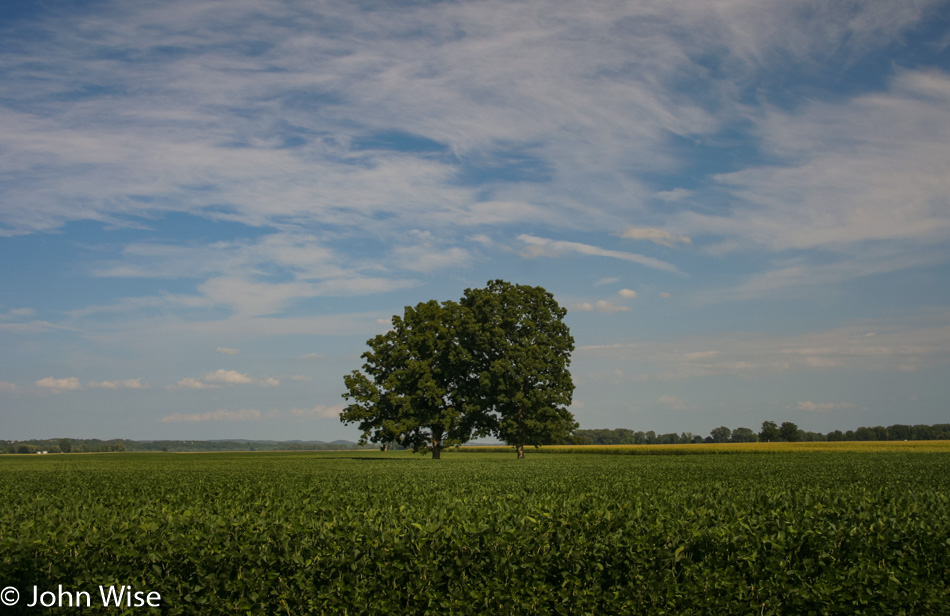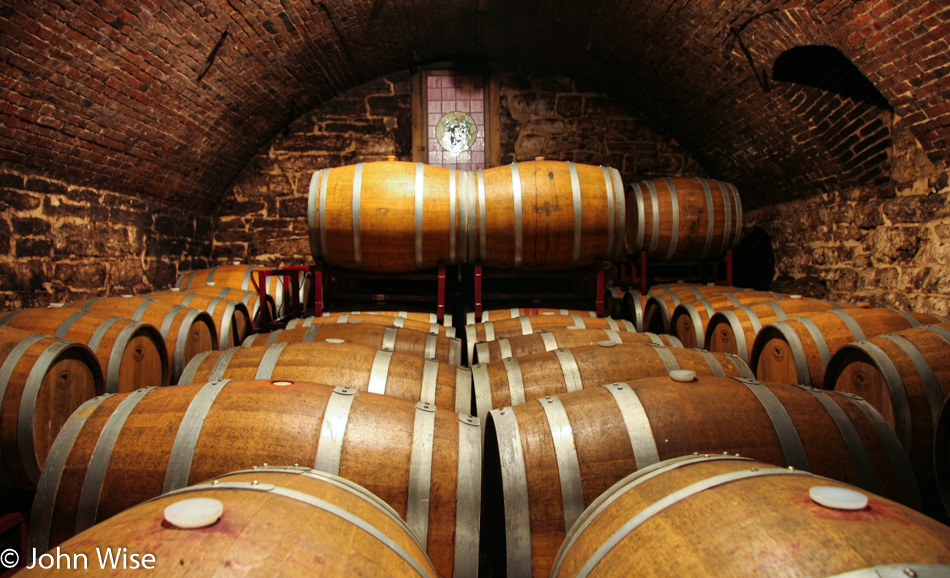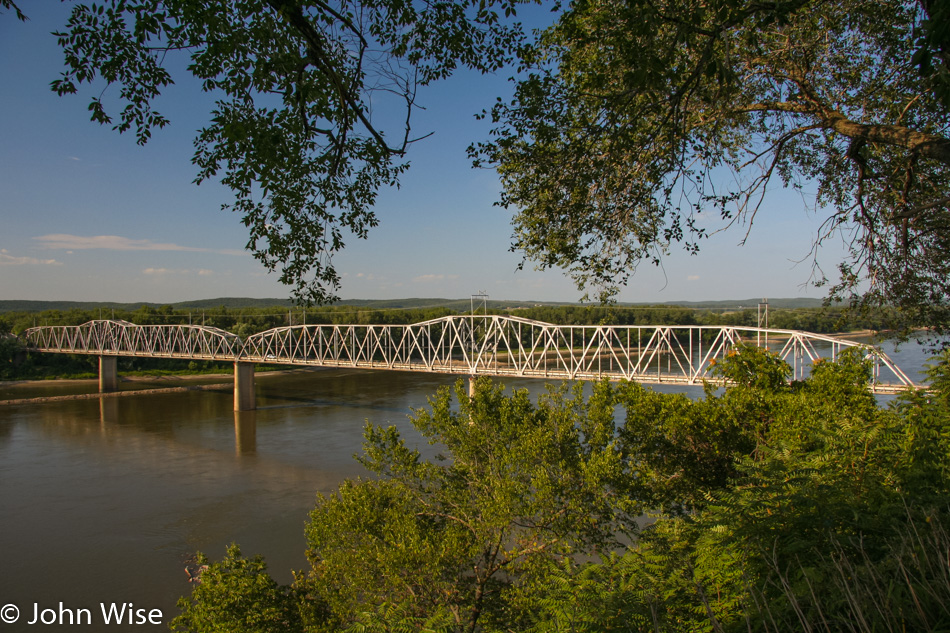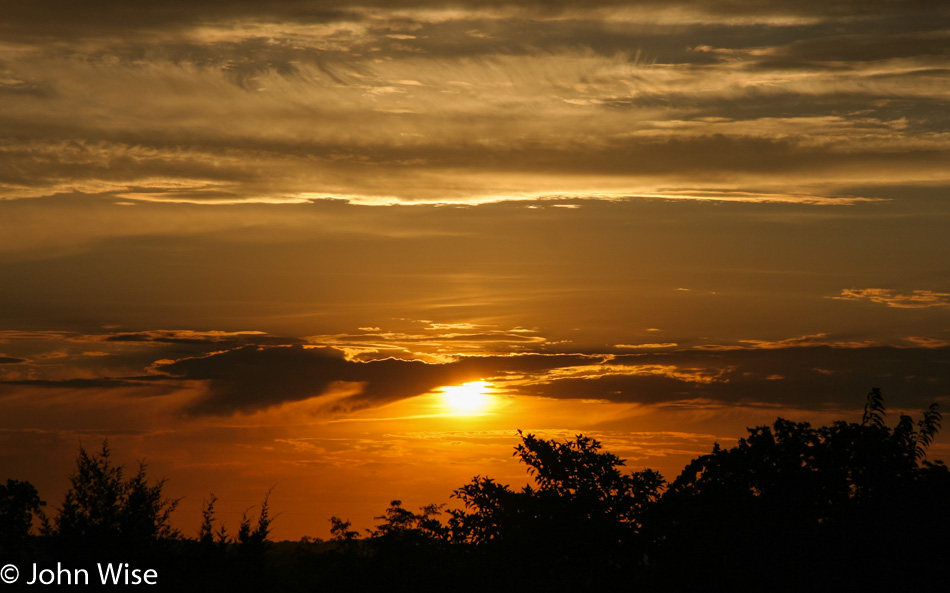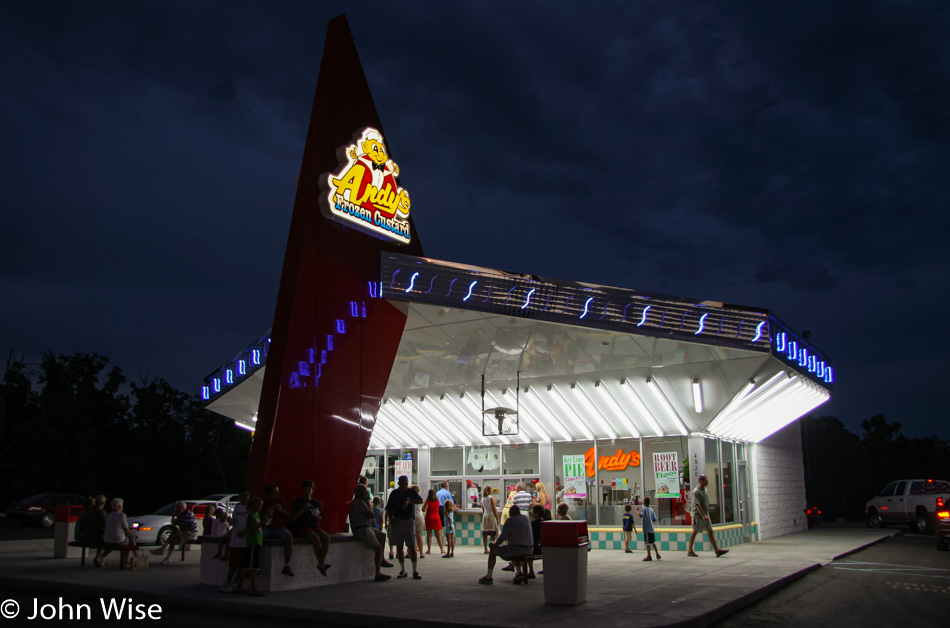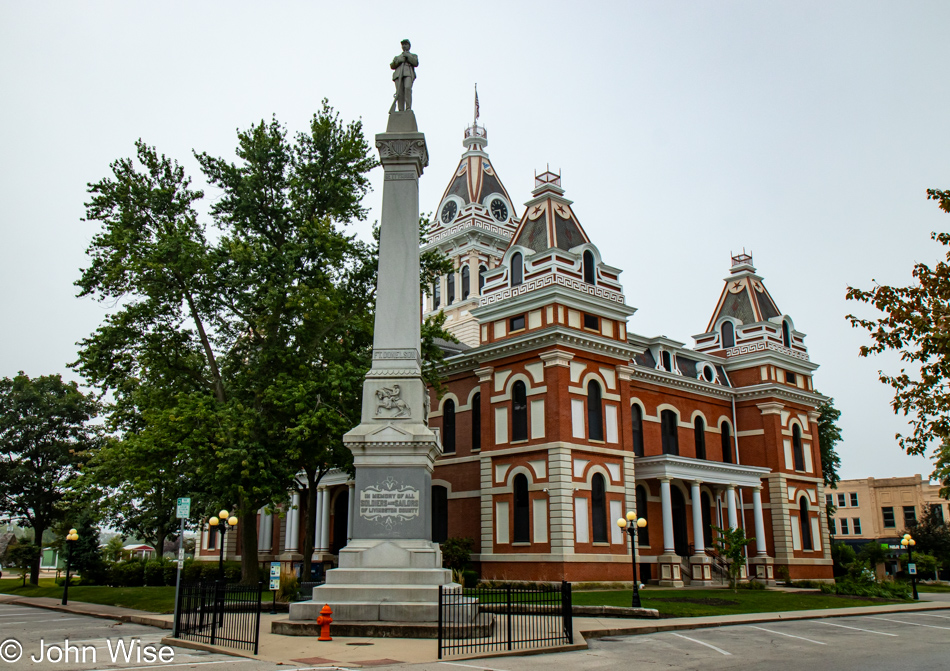
I pulled into Pontiac, Illinois, last night on the edge of town, as that’s where the cheaper hotels typically are located, right? Who knew I was in such a beautiful little town on the famous Old Route 66 – the Mother Road? The fog I woke to this morning was thick; you choose the saying that works for you to describe how heavy it was. After breakfast at a dingy place next to the road (not in this downtown area), I was on my way and experiencing corn in a new way: corn in the fog. Who knew that corn under these conditions would still look like corn? I was expecting marigolds. There was one point in my early morning corn delirium where, in the distance, I thought I could make out the Statue of Liberty, which had me in disbelief that it was corn and soybeans all the way between here and there.

When I left Arizona, my criterion was to avoid larger roads; there was no intention or fixed ideas for finding amazing natural sights or historical areas, only the hope of being surprised by what I found on the small roads of America. Little did I know that I was entering a path of corn and soy. There are no regrets because I’ve gotten exactly what I bargained for: a trip across the country to see what I could see outside of expectation, come what would. Driving on freeways, I would have never left the pace of the big city, but out here, I’m witnessing the speed of the rural Midwest, which appears to be moving at about the same pace that flowers and corn grow.
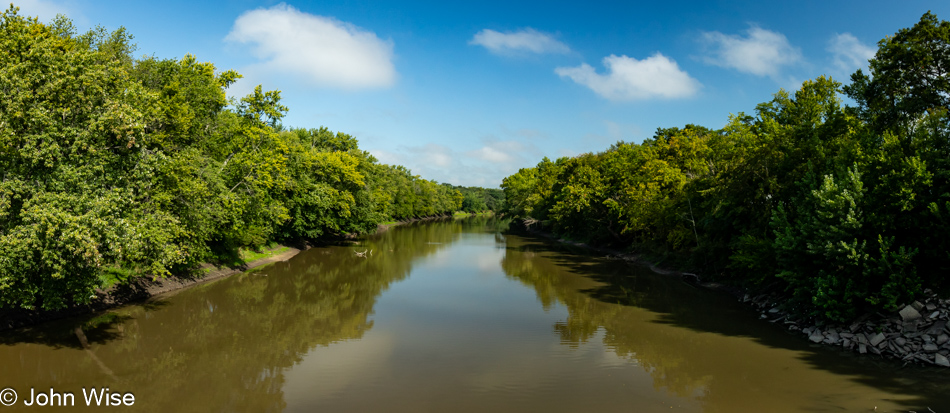
I was on Highway 52 near L’Erable, Illinois, when I passed the Iroquois River.
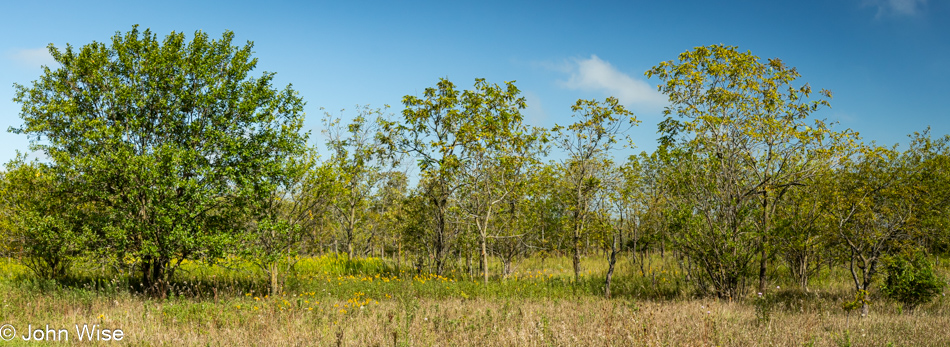
The trees are changing the farther I go east, though much more corn would lie ahead.

Passed a series of small towns: first up was Donovan, Illinois, with a population of 300. This being a presidential election season, you can rest assured that there is signage posted even in the smallest towns that love blending god and politics – we’ll leave it at that. Next up was Iroquois, the self-professed Town of Bunkum (nonsense). I’m here passing through Sheldon because in spite of my instructions to Google to avoid highways Google doesn’t realize that this includes four-lane divided highways that look a lot like freeways. So, I find country roads going in my general direction, adding 20 minutes here, 14 minutes there, and pretty soon, I’m able to add extra hours to my driving day due to some wild zig-zagging through farmland.

You see that road? It’s a quiet two-lane affair with soybeans growing over there; the corn is behind me. This is the Indiana State Line on State Route 18, middle of nowhere.
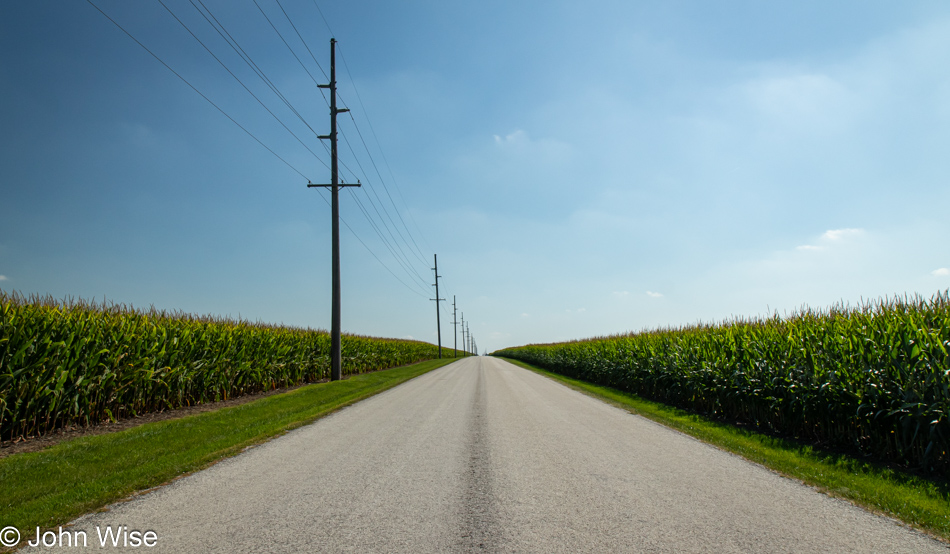
The promised corn.
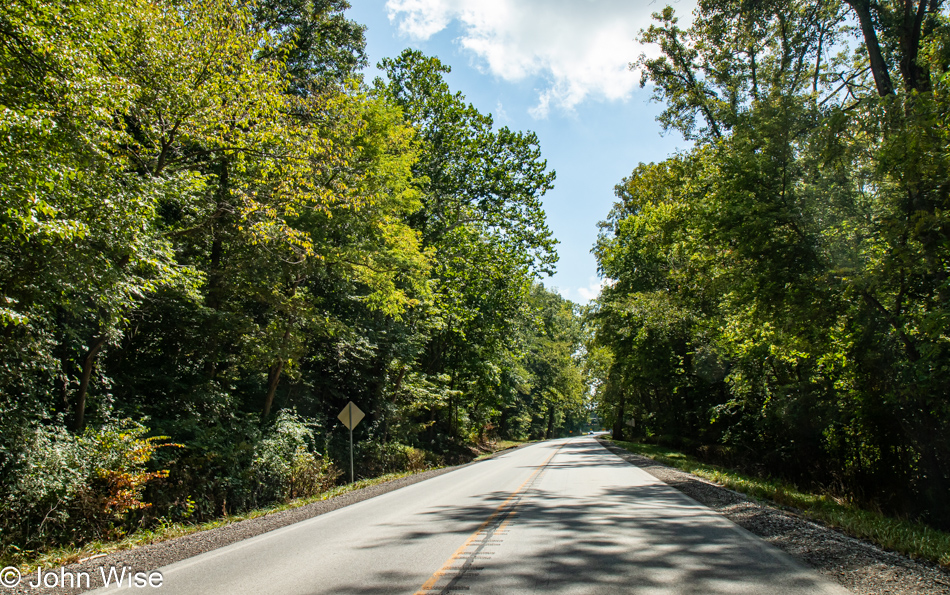
Tree densities I’ve not seen in days; welcome to a changing landscape.

Oh, is that the first sign of fall colors starting to emerge or is it Homer Simpson merging into the trees?
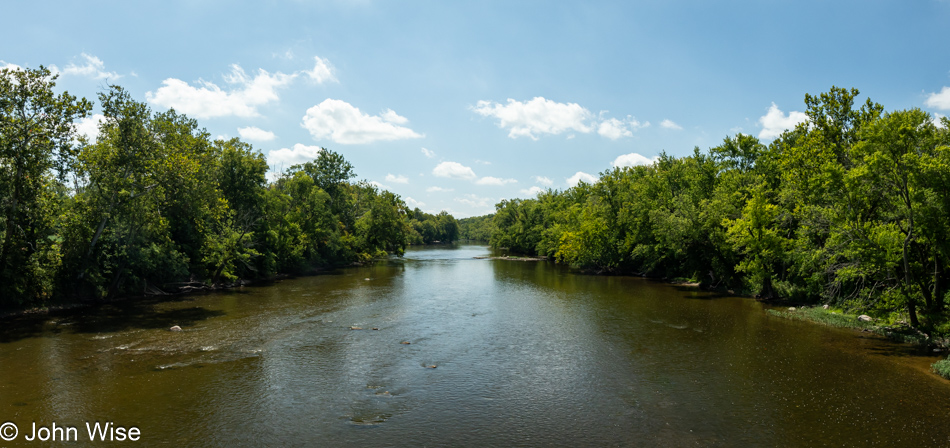
I’m crossing over the shallow Tippecanoe River, still on State Route 18, near Springboro, Indiana.
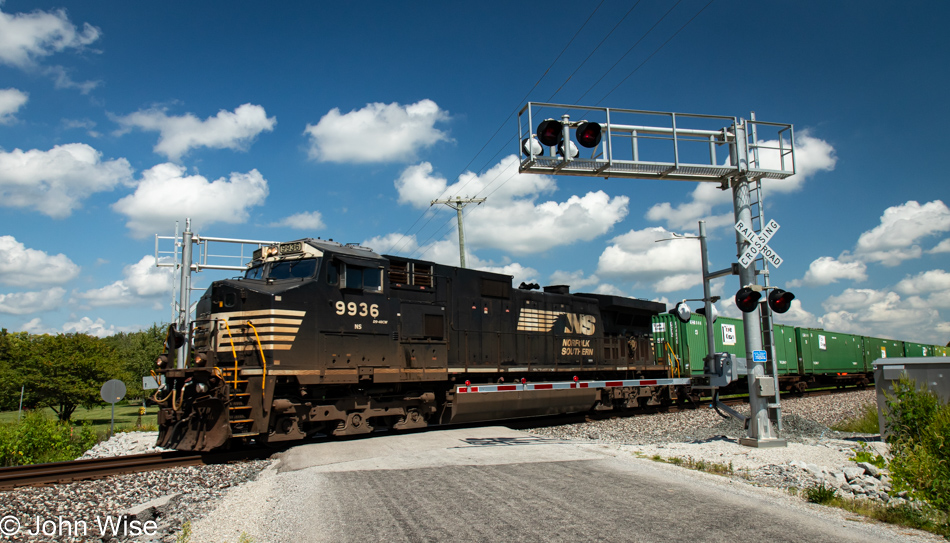
I passed through a beautiful small town called Delphi, which tells visitors that it played an important role in the Wabash and Erie Canal system that connected the waterways of Indiana with the Ohio River and the Great Lakes. I went looking for further information about that while writing this post, but I also came across this tidbit that most recently put Delphi, Indiana, on the map: it’s home of slain teens Abigail Williams and Liberty German whose murder case went unsolved for six years, likely a grisly affair.
Leaving town, I had no choice but to turn onto Highway 25, a divided highway. Nope, I wouldn’t have any of that, and within a mile, I turned onto State Route 218, adding 25 minutes to my drive time. I didn’t get far before I needed to turn left on County Road 525 W, but I missed it. I quickly turned around and found myself on an even smaller road. Noooo! A clever ploy by Google to get me back to Highway 25, the faster route. Damn it, Google, I’m not looking for fast, I want the opposite! While I was here, I thought this place amongst the corn was the perfect place for lunch. There I was, enjoying my lettuce-wrapped mortadella, when an approaching train whistle alerted me. I could see the crossing a little further up this remote road, so I raced over. The excitement of being out here never ends.
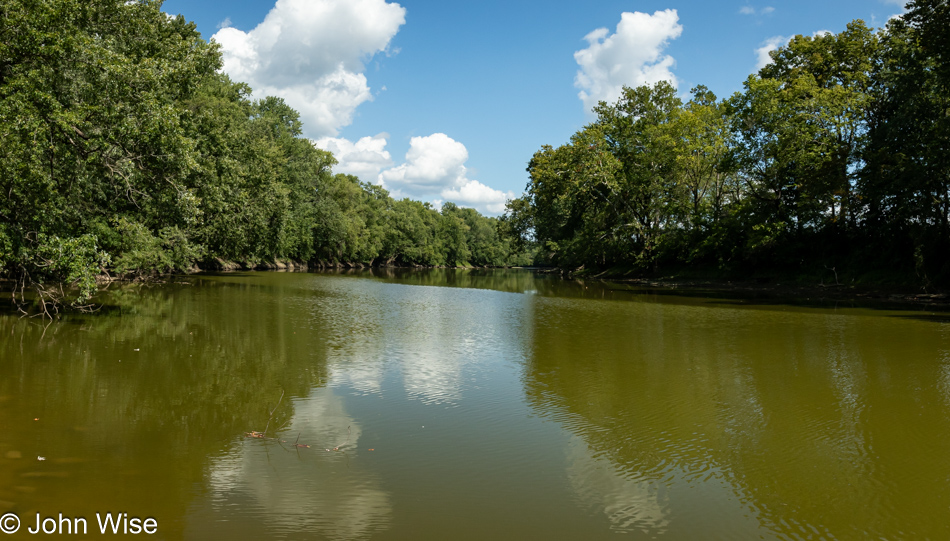
Hardly an hour passes during waking hours that Caroline or I are not reaching out to one another. There are times when she’s busy putting out fires at work, or I don’t have phone signal, but sooner rather than later, a nudge offering a hug or expression of love is shared, keeping us connected during the day. With me now three time zones away, that might get difficult this evening, but the good news is that we are also now merely 48 hours from seeing each other again.
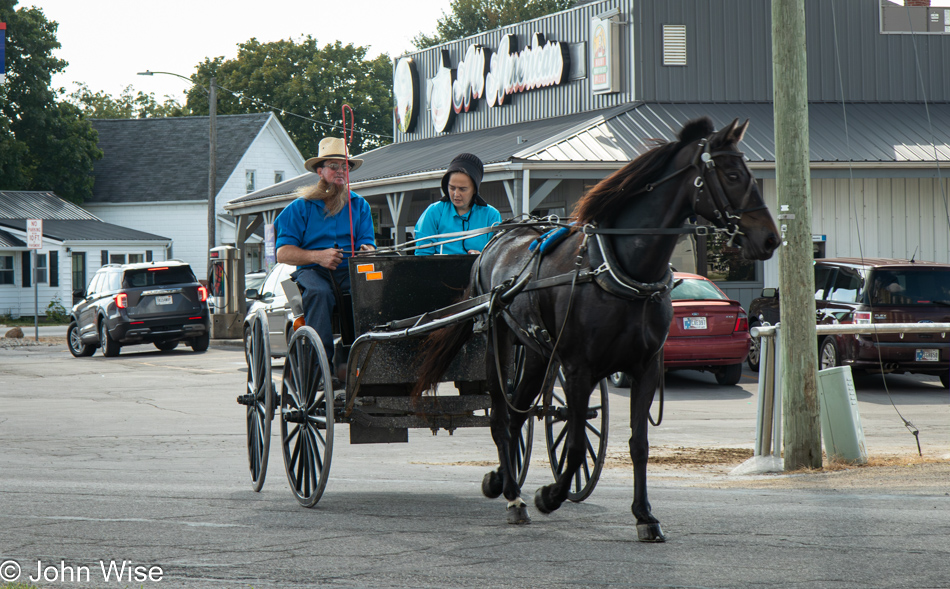
This Amish couple should be Caroline and me, sitting next to each other, moving at the speed a horse can pull us, my beard not gray yet, and Caroline rocking a bonnet. We’d ride our buggy into the sunset and sleep among the corn because life is an adventure, and love is grand.
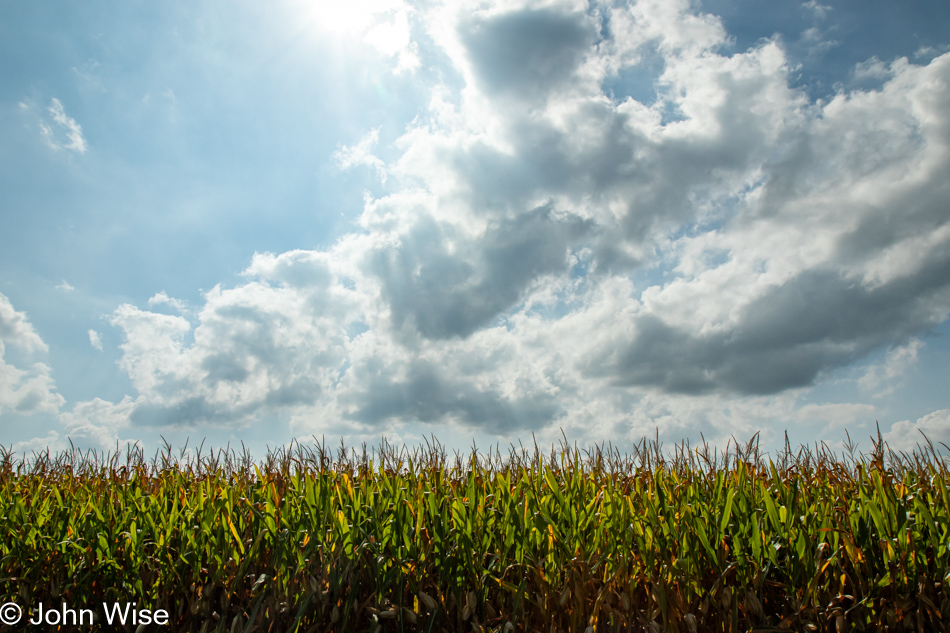
While I was in Monroe, Indiana, taking photos of Amish people who naturally don’t like being photographed, there was a sign nearby, the real reason I stopped, that showed the current price of soybeans and corn. I don’t know if this is a buying or selling price, but here you go: Soybeans are $9.63 per bushel. A bushel of beans weighs 60 pounds (27 kilos), and a bushel of corn weighing 35 pounds (16 kilos) goes for $3.36. Now consider that, on average, about 200 bushels of corn are produced on an acre of land. The ten states of the Great Plains and the Midwest that grow corn have about 65-80 million acres under cultivation, which include about 110,000 square miles of corn. Germany, in comparison, is about 137,000 square miles in size.
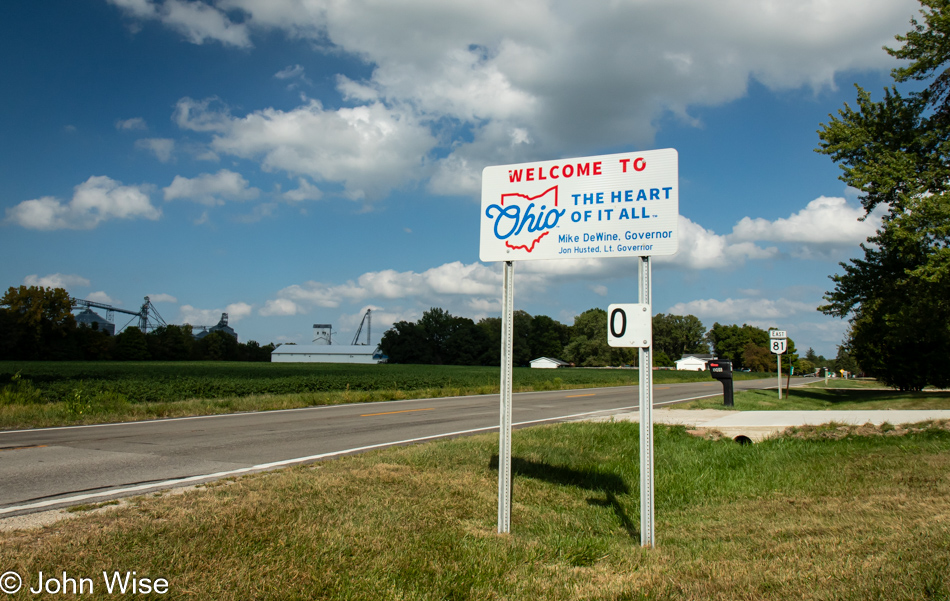
Welcome to Ohio on State Route 81 in the town of Willshire.
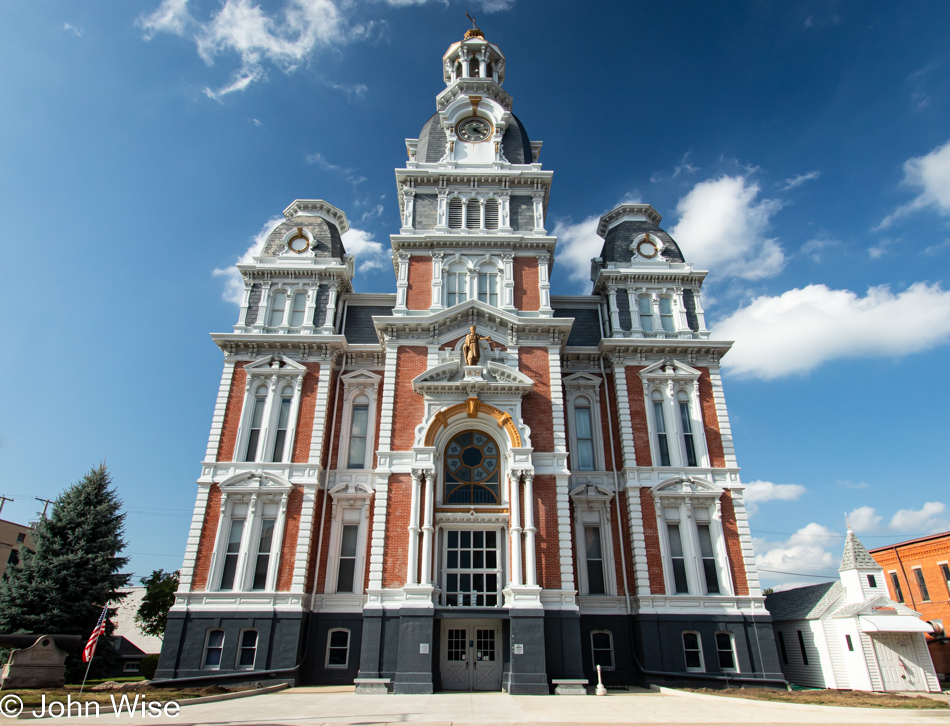
I’ve joined the Lincoln Highway in Van Wert, Ohio; this is the Van Wert courthouse.

In Delphos, Ohio, you can find remnants of the Miami & Erie Canal.
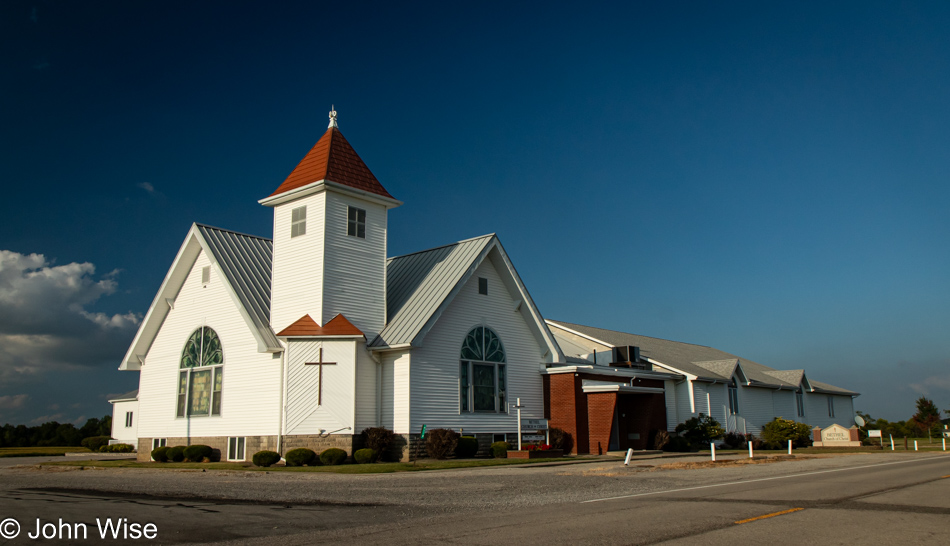
One is never far from the house of God when in America. This one is the Bethel Church of Christ in Ada, Ohio.
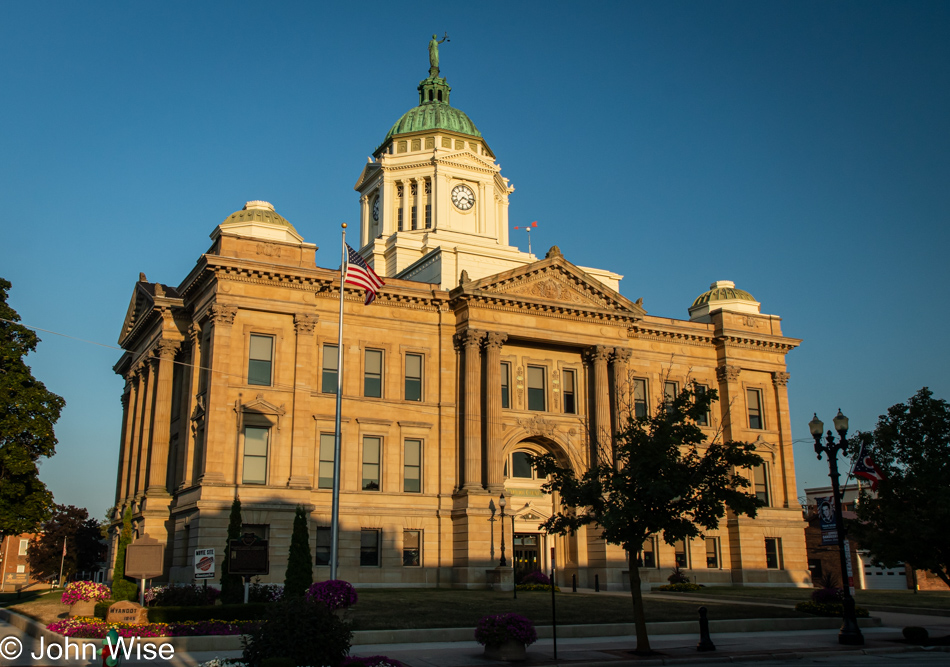
This concludes our travel day, not with another photo of corn but a spectacular bit of architecture in the Upper Sandusky, Ohio, courthouse. I learned at dinner that it was featured in the movie Shawshank Redemption. Tomorrow, I’ll pass through Mansfield, Ohio, where a prison used in that film can be found.
